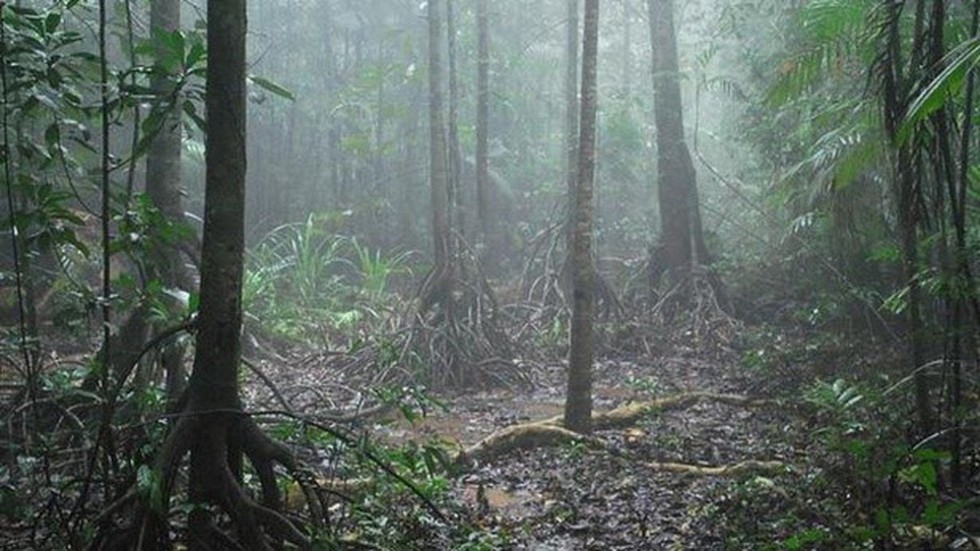
About Myristica swamps:
- These are freshwater swamps predominated by members of the Myristicaceae family.
- These forests are characterized by trees with large protruding roots jutting out of waterlogged soil which remains inundated throughout the year.
- They have evolved over millions of years and are comprised of old-growth trees.
- Geographical distribution: In India, these unique habitats occur in the Western Ghats and a smaller distribution exists in the Andaman and Nicobar Islands.
- Climatic conditions: The formation of these swamps is dependent on abiotic conditions like the shape of the valley between the forested hills, the amount of rainfall a place receives (with an average of 3000 mm), and water availability throughout the year.
- Typically, Myristica swamps are seen next to rivers and help in retaining water and act as a sponge, ensuring perennial water availability.
- These swamps are home to many vertebrate and invertebrate faunal species. This is due to stable macroecological conditions like high humidity, moderate temperature, and macrohabitat availability.
- Source : World Environment Day | Climate change and human intervention threaten the Myristica swamps of Kerala

About Petroleum Coke:
- It is a final carbon-rich solid material and residual waste material extracted from oil refining.
- It is a spongy, solid residue from oil distillation that can be burned for fuel similar to coal.
- It is a byproduct created when bitumen is found in tar sands.
- Bitumen contains a higher number of carbon atoms than regular oil and it’s these atoms, extracted from large hydrocarbon molecules using heat, that go on to form petcoke.
- It is high in calorific value and easy to transport and store.
- It releases toxic gases like carbon dioxide, nitrous oxide, mercury, arsenic, chromium, nickel, and hydrogen chloride after burning.
- There are two distinctive grades of Petroleum Coke viz. Calcinable or Green Petcoke and Fuel Grade Petcoke.
- Application:
- It is widely used by power stations and several manufacturing industries including cement, steel and textile plants in India.

About EIACP Programme:
- It is one of the Central Sector sub-scheme being implemented in alignment with Mission LiFE.
- The Environmental Information System (ENVIS) is renamed EIACP (Environmental Information, Awareness, Capacity Building and Livelihood Programme).
- ENVIS came into existence as a planned programme in 1983.
- It has been subsumed within the revamped scheme of Environment Education, Awareness, Research and Skill Development.
- ENVIS EIACP serves as a one-stop platform for the dissemination of environmental information, informed policy formulation on various facets of the environment and facilitation of alternate livelihoods through green skilling.
Key facts about Mission LiFE (Lifestyle for Environment)
- It was first proposed by the Prime Minister of India at COP 26.
- It is envisioned as an India-led global mass movement that will nudge individual and collective action to protect and preserve the environment.
- The global movement will showcase sustainable goals and climate actions taken by countries and individuals around the world.
- It makes the fight against climate change democratic, in which everyone can contribute with their respective capacities.
- It emboldens the spirit of the P3 model, i.e. Pro Planet People.
- It functions on the basic principles of ‘Lifestyle of the planet, for the planet and by the planet’.
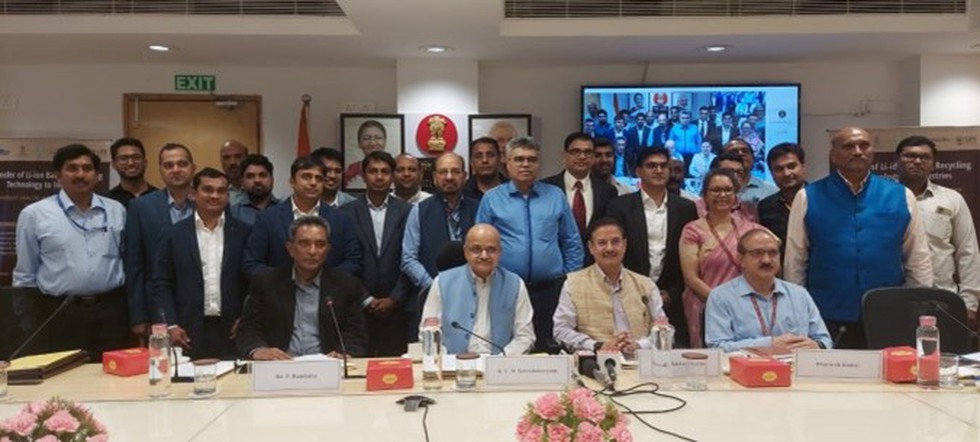
About Li-ion battery recycling technology :
- It is the indigenously developed technology that could process assorted types of discarded Li-ion batteries.
- It has the capacity of recovering more than 95 per cent Lithium (Li), Cobalt (Co), Manganese (Mn) and Nickel (Ni) contents in the form of their corresponding oxides/carbonates of about 98 per cent purity.
- The recycling process involves leaching followed by hierarchical selective extraction of metal values through the solvent extraction process.
- These secondary raw materials could be used for battery manufacturing or in other potential applications.
- This technology has been developed under the Centre of Excellence on E-waste Management.
Key facts about Lithium
- It is a soft, silvery-white metal that heads group 1, the alkali metals group, of the periodic table of the elements.
- It has the lowest density of all metals and the lightest of the solid elements.
- It reacts vigorously with water.
- It does not occur as a metal in nature but is found combined in small amounts in igneous rocks.
- Major Reserves: Lithium reserves are concentrated in the lithium triangle in South America – Argentina, Bolivia & Chile, with 50% of the deposits concentrated in these regions.
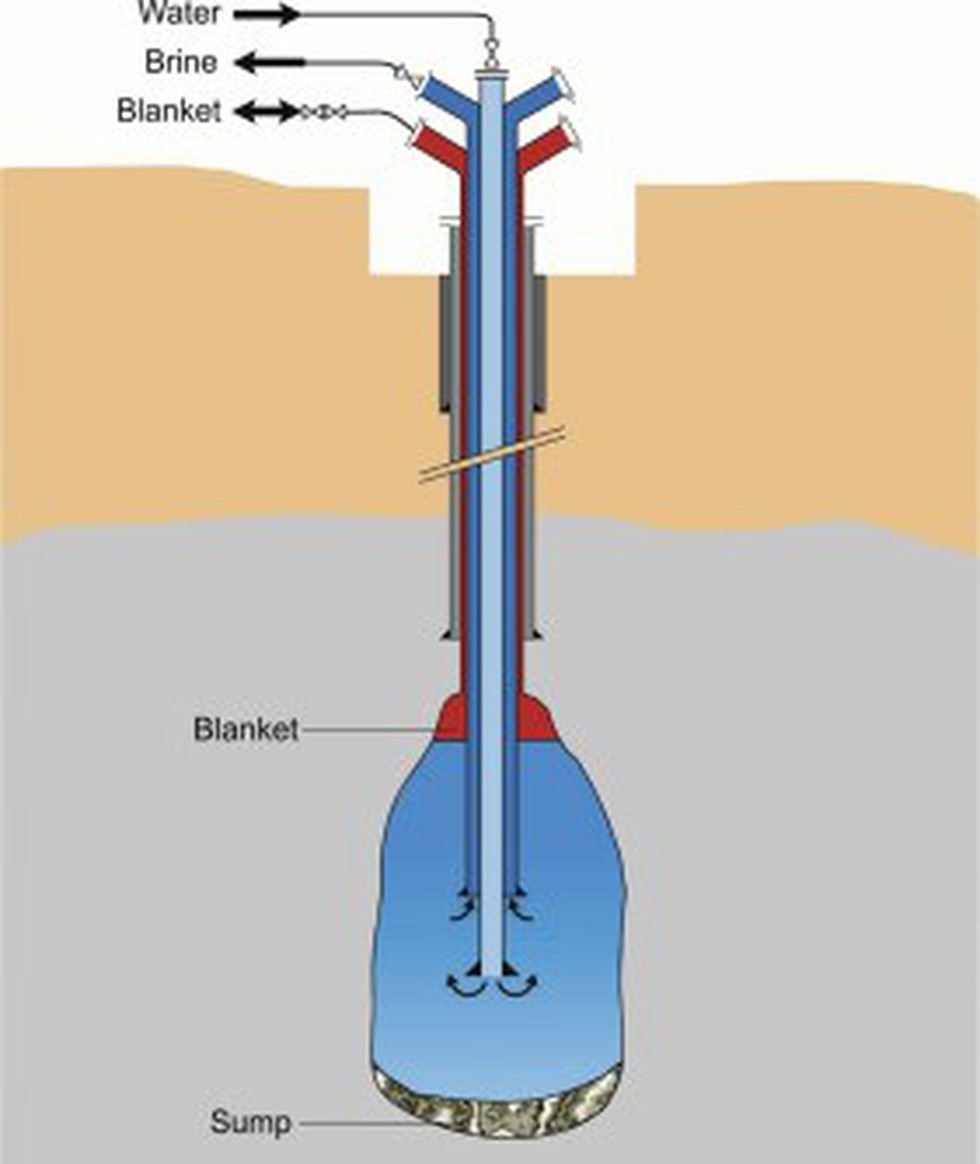
About Salt Cavern:
- Salt caverns are developed by the process of solution mining, which involves pumping water into geological formations with large salt deposits to dissolve the salt.
- After the brine (water with dissolved salt) is pumped out of the formation, the space can be used to store crude oil.
- The process is simpler, faster, and less cost-intensive than developing excavated rock caverns.
- Salt cavern-based oil storage facilities are also naturally well-sealed, and engineered for rapid injection and extraction of oil.
- The salt that lines the inside of these caverns has extremely low oil absorbency, which creates a natural impermeable barrier against liquid and gaseous hydrocarbons, making the caverns apt for storage.
- Rajasthan, which has the bulk of requisite salt formations in India, is seen as the most conducive for developing salt cavern-based strategic storage facilities.
India’s Strategic Petroleum Reserves
- India has three existing strategic oil storage facilities — at Mangaluru and Padur in Karnataka, and Visakhapatnam in Andhra Pradesh.
- These are made up of excavated rock caverns.
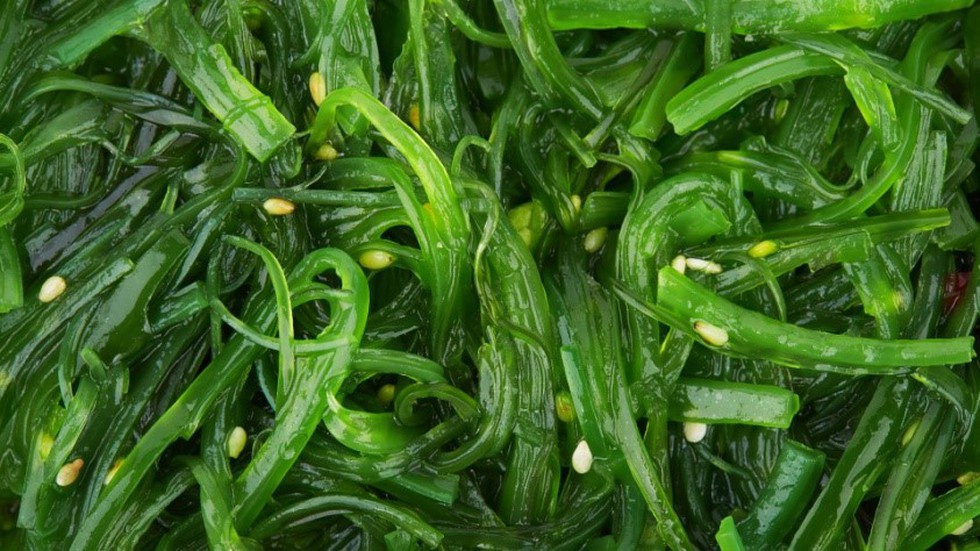
About Seaweeds:
- "Seaweed" is the common name for countless species of marine plants and algae that grow in the ocean as well as in rivers, lakes, and other water bodies.
- They range in colours from red, green, brown and black and also vary in size, from microscopic to large underwater forests.
- Seaweeds are generally anchored to the sea bottom or other solid structures by rootlike “holdfasts,” which perform the sole function of attachment and do not extract nutrients as do the roots of higher plants.
- Seaweeds often form dense growths on rocky shores or accumulations in shallow water.
- Many show a well-established zonation along the margins of the seas, where the depth of the water is 50 metres (about 165 feet) or less.
- Uses:
- A number of seaweed species are edible, and many are also of commercial importance to humans.
- Some are used as fertilizers or as sources of polysaccharides.
- The high amount of antioxidants present in seaweed protects the body from damages caused by free radicals and protect cells from their impact.
- Animal studies have found that substances found in seaweed help increase the production of a protein that metabolises fat effectively.
- Research suggests that consuming seaweed can help in managing diabetes by balancing the sugar levels in the blood.
- Many seaweeds contain anti-inflammatory and anti-microbial agents.
- They are effective binding agents (emulsifiers) in such commercial goods as toothpaste and fruit jelly, and popular softeners (emollients) in organic cosmetics and skin-care products.
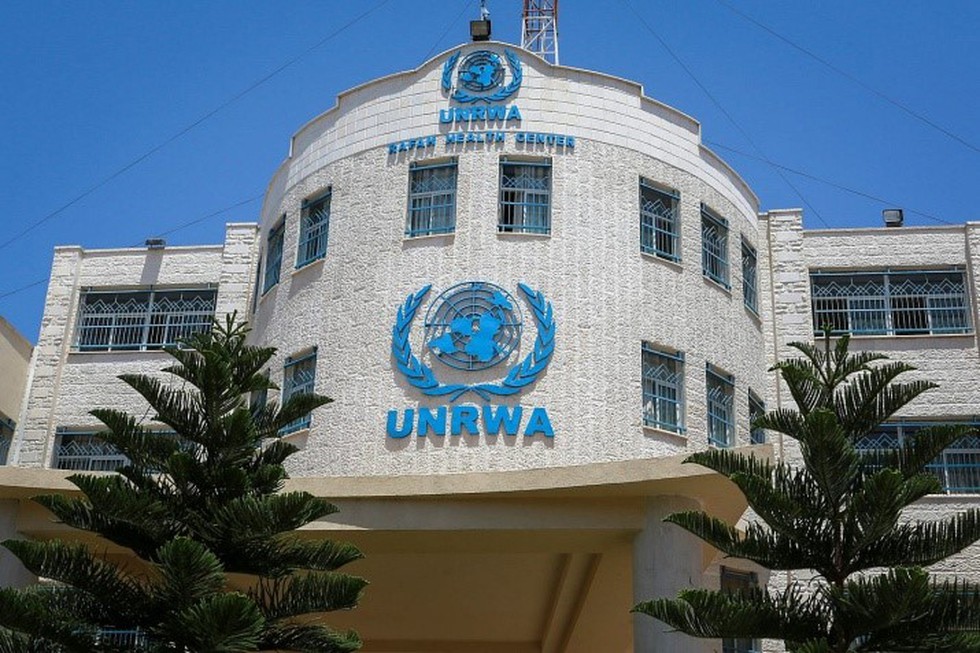
About The United Nations Relief and Works Agency for Palestine Refugees in the Near East (UNRWA):
- It is a UN agency that supports the relief and human development of Palestinian refugees.
- It was established in 1949 when nearly three-quarters of a million Palestinians became refugees in the aftermath of the 1948 Arab- Israeli war.
- Mandate: To support Palestinian refugees and their patrilineal descendants who fled or were expelled from their homes during the 1948 Palestine War and 1967 Six-Day War.
- UNRWA was originally designed as a temporary agency, though its mandate has been continuously renewed every three years by the General Assembly.
- Services provided: It’s services encompass education, health care, relief and social services, camp infrastructure and improvement, microfinance and emergency assistance, including in times of armed conflict.
- Fields of operations: It provides services in its five fields of operations: Jordan, Lebanon, Syria, Gaza Strip and West Bank, including East of Jerusalem.
- UNRWA is unique in that it delivers services directly to its beneficiaries.
- Funding: It is funded almost entirely by voluntary contributions from UN Member States. It also receives some funding from the Regular Budget of the United Nations.
- It reports only to the UN General Assembly.
- Headquarters: It was originally headquartered in Beirut, Lebanon, but was moved to Vienna, Austria, in 1978. In 1996 the General Assembly moved the agency to the Gaza Strip to demonstrate the Assembly’s commitment to the Arab-Israeli peace process.
- Its chief officer, the commissioner-general—the only leader of a UN agency to report directly to the General Assembly—is appointed by the UN secretary-general with the approval of an Advisory Commission.

About Fixed-Dose Combination (FDC) Drugs:
- A FDC drug includes two or more active pharmaceutical ingredients (APIs) combined in a single dosage form, which is manufactured and distributed in fixed doses.
- They have been shown to appreciably reduce the risk of medication non-adherence, which is particularly important in patients with chronic diseases.
- However, their rationality for use should be based on sound medical principles as there have been concerns with their irrationality and utility in several countries.
- Common examples: Cough syrups Phensedyl and Corex, Vicks Action 500.
- Advantages of FDCs:
- Burden of keeping track of several medications, understanding their various instructions, etc. is reduced which improves patient compliance and therefore improves treatment outcomes.
- The FDCs are more economic than single ingredient drugs.
- The manufacturing cost is quite low as compared to the cost of producing separate products
- Then there is Simpler logistics of distribution.
- Disadvantages of FDCs:
- If an adverse drug reaction occurs from using an FDC, it may be difficult to identify the active ingredient responsible for causing the reaction.
- If the drugs combination is not appropriate, then it can lead to some patients getting too much of an ingredient and others getting too little. FDCs "limit clinicians' ability to customize dosing regimens."

About Shanan Powerhouse:
- Location: It is located in Joginder Nagar in the Mandi district of Himachal Pradesh.
- Commissioned in 1932, the powerhouse was constructed as per a 99-year lease executed between Raja Jogendra Sen, the then king of Mandi, and Col BC Batty, Chief Engineer of the Punjab Government, in 1925.
- This powerhouse was constructed against the backdrop of dense deodar forests.
- It is one of the oldest powerhouses of the country, which used to feed the entire undivided Punjab, Lahore and Delhi before Independence.
- After the reorganisation of states in 1966, the Shanan powerhouse was given to Punjab by the Centre as the lease agreement, signed in 1925 was yet to expire.
- The project originally was of 48 MW capacity, but the Punjab government enhanced its capacity to 60 MW in 1982. Later, 50 MW more was added to make its capacity 110 MW.
- The main attraction of the hydro project is the four-stage haulage trolley service. It was basically constructed for carrying construction material of Shanan powerhouse from Jogindernagar to Barot. It is a unique type of trolley based on pulley system with no engine, steering wheel or no gears or brakes.
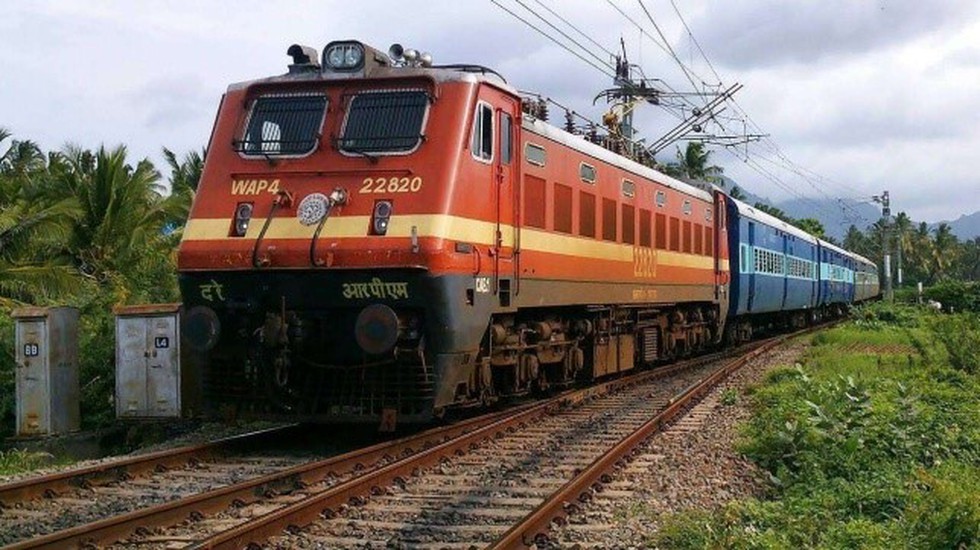
About Kavach System:
- It is an indigenously developed Automatic Train Protection (ATP) system.
- Kavach was developed by the Research Design and Standards Organisation (RDSO) under Indian Railway (IR) in collaboration with Medha Servo Drives Pvt Ltd, HBL Power Systems Ltd and Kernex Microsystems.
- It is a set of electronic devices and Radio Frequency Identification devices installed in locomotives, in the signalling system as well the tracks, that talk to each other using ultra-high radio frequencies to control the brakes of trains and also alert drivers, all based on the logic programmed into them.
- Since 2016, the railways have been carrying out field tests for Kavach on passenger trains.
- Applications:
- It has been designed to assist locomotive pilots in avoiding Signal Passing At Danger (SPAD) and overspeeding.
- The system can alert the loco pilot, take control of the brakes and bring the train to a halt automatically when it notices another train on the same line within a prescribed distance.
- The device also continuously relays the signals ahead to the locomotive, making it useful for loco pilots in low visibility.
- It also controls the speed of the train by an automatic application of brakes in case the loco pilot fails to do so.
- It helps the loco pilot in running the train during inclement weather conditions such as dense fog.


.png)
.png)

























































































































































.png)
.png)
.png)
.png)
.png)


.png)
.png)
.png)





.png)
.png)






.png)
.png)
.png)
.png)
.png)
.png)
.png)
.png)
.png)

.png)







.png)
.png)


.png)
.png)
.png)


.png)

.png)
.png)





.jpg)

.png)
.png)


.png)

.png)
.png)
.png)

.jpg)

.jpg)


.png)

.png)
.png)
.png)
.png)
.png)
.png)
.png)
.png)
.png)
.png)




.png)

.png)





.png)
.png)
.png)
.png)
.png)
.png)
.png)
.png)
.png)
.png)
.jpg)
.jpg)

.png)
.png)
.png)
.png)
.png)
.png)
.png)
.png)
.png)
.png)
.png)
.png)
.png)
.png)
.png)
.png)
.png)
.png)
.png)
.png)
.png)
.png)



.jpg)
.jpg)


.jpg)
.jpg)
.jpg)
.jpg)
.jpg)

.jpg)








.jpg)
.jpg)
.jpg)
.jpg)
.jpg)

















.jpg)
.jpg)







.jpg)


















.jpg)
.jpg)






























































































.jpg)
.jpg)


























.jpg)

.jpg)










.jpg)








.jpg)




.jpg)










.jpg)


















.jpg)












































.jpg)














.jpg)
.jpg)
.jpg)





.jpg)

.jpg)
.jpg)





































































.jpg)


































.jpg)
.jpg)
















































.jpg)












.jpg)


.jpg)




.jpg)
.jpg)
.jpg)

.jpg)
.jpg)
.jpg)
.jpg)

.jpg)
.jpg)
.jpg)

.jpg)
.jpg)
.jpg)
.jpg)
.jpg)
.jpg)
.jpg)
.jpg)

.jpg)


.jpg)
.jpg)
.jpg)
.jpg)
.jpg)
.jpg)
.jpg)
.jpg)
.jpg)
.jpg)











.jpg)
.jpg)





.jpg)
.jpg)
.jpg)
























.jpg)
























.jpg)









.jpg)
.jpg)







.jpg)
.jpg)









































.jpg)
.jpg)
.jpg)
.jpg)
.jpg)

.jpg)
.jpg)
.jpg)
.jpg)
.jpg)


.jpg)
.jpg)
.jpg)
.jpg)
.jpg)

.jpg)
.jpg)
.jpg)
.jpg)
.jpg)
.jpg)
.jpg)
.jpg)
.jpg)
.jpg)
.png)

.png)
.png)

.png)
.png)
.png)
.png)


.jpg)
.jpg)

.jpg)
.jpg)
.jpg)

.png)
.png)
.png)
.png)
.png)
.png)
.png)

.png)
.png)
.png)
.png)
.png)
.png)
.png)
.png)
.png)
.png)





































































-min.png)



.png)




.png)








































